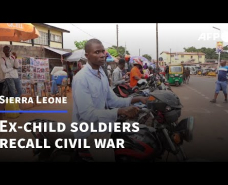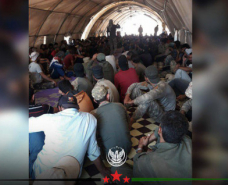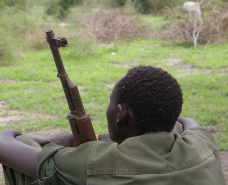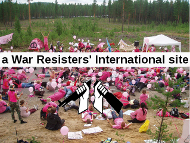‘Raising tomorrow’s mujahideen’: the horrific world of Isis’s child soldiers
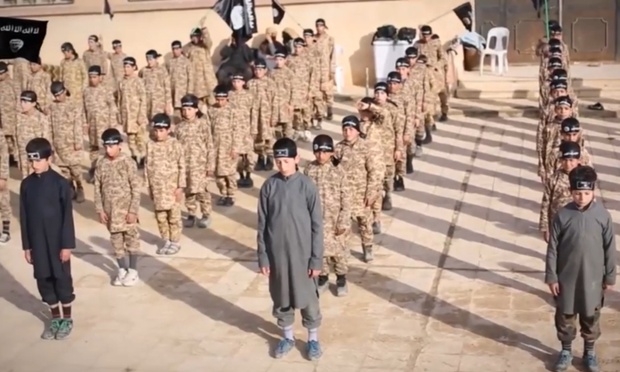
By Jessica Stern and JM Berger, The Guardian
Isis’s bid to build a society hasn’t stopped at the recruitment of women. Foreigners have been encouraged to bring their whole families to Iraq and Syria to “live under the shade of the caliphate”.
In November 2014, Isis released a video introducing “some of our newest brothers from Kazakhstan”, who had “responded to the crusader aggression … and raced to prepare themselves and their children”. The video showed dozens of smiling boys, the sons of a unit of Kazakh fighters, clambering into a bus and going to a schoolroom described as “the ultimate base for raising tomorrow’s mujahideen”.
“We spent our childhood far away from this blessing,” their Kazakh teacher explained. “We were raised on the methodology of atheism ... The kuffar [unbelievers] poisoned our minds ... Our children are happy. They’re living in the shade of the Qur’an and Sunnah.”
Another teacher was shown supervising a class of pre-teenage boys in uniforms. “They have completed lessons in Qur’an, [proper recitation of the Qur’an], and the Arabic language,” he said. “They will move on to do physical and military training.”
The scene shifted to show a Kazakh boy of about nine combat-stripping an assault rifle, then training with others in its use. The physical training included hand-to-hand combat and calisthenics. At the end of the day, a member of Isis’s media team questioned one of the students.
“What will you be in the future, if God wills it?” the interviewer asked.
“I will be the one who slaughters you, oh kuffar,” the boy responded, grinning at the camera. “I will be a mujahid, if God wills it.” One 10-year-old boy from the video was seen in a subsequent release executing two prisoners.
Such videos and images are far from rare. Isis members on social media routinely post images on social media of children holding severed heads and playing on streets where dismembered bodies are splayed carelessly on the sidewalk. One image posted to Twitter showed a child playacting the beheading of American hostage James Foley using a doll.
A UN report on war crimes in Syria pointed to the indoctrination of children as a “vehicle for ensuring long-term loyalty” and creating a “cadre of fighters that will see violence as a way of life”.
While children have often been victims of such manipulation in war zones, Isis approached their “education” as it did almost everything else – systematically.
Isis actively recruits children to send them to training camps and then to use them in combat and suicide missions. It has used children as human shields, suicide bombers, snipers and blood donors. The UN secretary general’s special representative for children and armed conflict reports that Isis “has tasked boys as young as 13 to carry weapons, guard strategic locations or arrest civilians”.Human Rights Watch (HRW) found that hundreds of “non-civilian” male children had died in the fighting.
Isis strictly controls the education of children in the territory it holds. According to a teacher from Raqqa, Isis considers philosophy, science, history, art and sport to be incompatible with Islam. “Those under 15 go to sharia camp to learn about their creed and religion,” an Isis press officer in Raqqa told Vice News. “Those over 16, they can attend the military camp ... Those over 16 and who were previously enrolled in the camps can participate in military operations.” But in Isis propaganda videos, even younger children are shown being trained in the use of firearms.
This is a hallmark of a “total organisation”, which sociologist Erving Goffman defined as one that “has more or less monopoly control of its members’ everyday life.” Pol Pot experimented with creating a utopia in Kampuchea (the name used for Cambodia when the Khmer Rouge controlled it) in the 1970s, using methods not that different from those employed by Isis. The idea was to create an entirely new society, uncontaminated by the values the Khmer Rouge aimed to stamp out.Children were seen as the least corrupted by bourgeois values and would be educated “according to the precepts of the revolution”, which did not include traditional subjects. The children were both victims and perpetrators of terror.
Isis follows a trend of training ever-younger operatives. By doing so they hope to ensure a new generation of fighters. Leadership decapitation is significantly less likely to be effective against organisations that have children ready to step into their fathers’ shoes.
Residents of Raqqa reported to the news website Syria Deeply that children are taught how to behead another human being, and are given dolls on which to practice. One child told HRW interviewers, “When Isis came to my town ... I liked what they are wearing, they were like one herd. They had a lot of weapons. So I spoke to them, and decided to go to their training camp in Kafr Hamra in Aleppo.” He attended the camp when he was 16 years old, but the leader told him he preferred younger trainees. Pol Pot, too, preferred younger trainees.
Like other “total organisations”, Isis aims to create a new form of man. Young children are easier to mould into Isis’s vision of this new man. As psychiatrist Otto Kernberg explains, “Individuals born into a totalitarian system and educated by it from early childhood have very little choice to escape from total identification with that system.”
Another child, Amr, told the HRW interviewers that he had participated in a “sleeper cell” for Isis at age 15, to collect information on the Syrian government’s operation in Idlib. When he started working for Isis full time, he was given a Kalashnikov rifle, a military uniform and a bulletproof vest. He and the others in his unit, including other children, were encouraged to volunteer as suicide bombers, and several hundreds of fighters did so. Amr said that he didn’t want to be a suicide-bomber, so he delayed signing up, hoping his name would come up last. He told HRW that he felt social pressure to “volunteer” to die.
Some of the children come with their parents from abroad, to grow up in what their parents see as a pure Islamic state. They learn to say that they are citizens of the Islamic State rather than from their country of origin. The poorer neighbourhoods of Ankara, Turkey, are reportedly a source of child recruits. One such neighbourhood, Hacibayram, has become a recruitment hub for Isis. HRW discovered that child soldiers are paid the equivalent of $100 a month, around half as much as adult fighters. In Raqqa, Isis pays parents and bribes children to attend the camps. But the recruits are not always volunteers. Children of ethnic minorities, particularly the Kurds and Yazidis, have been kidnapped and forced to join Isis. According to Syrian Observatory for Human Rights, in one case, more than 600 Kurdish students were kidnapped on their way home from taking exams in Aleppo. Their captors gave the boys an Islamic “education”, encouraging the children to join the jihad, showing them videos of beheadings and suicide attacks. A doctor told the HRW interviewers that he had treated a wounded boy between the ages of 10 and 12. The boy’s job was to whip prisoners.
Using children under the age of 18 as soldiers is a war crime. A study of 300 former Ugandan child soldiers found that approximately one third were diagnosed with post-traumatic stress disorder (PTSD). Two-thirds were suffering behavioural and emotional problems, mostly anxiety and depression. So called “moral injury” – pain or damage to the conscience caused by witnessing, failing to prevent or perpetrating acts that violate ethical norms – is a risk factor for further violence, PTSD and depression. The widespread commission of atrocities could lead to a form of societal PTSD – both for victims and perpetrators. One of the results of continuously witnessing morally injurious actions, or of perpetrating them, is the blunting of feeling and loss of empathy.
Interestingly, some child soldiers may avoid adverse mental health outcomes by developing an appetite for aggression; those who learn to take pleasure from killing appear to be less susceptible to PTSD symptoms, according to work in northern Uganda and Colombia by Roland Weierstall and colleagues.
Is Isis deliberately trying to create a society with an appetite for violent aggression? It is impossible to know Isis’s conscious intentions, but either way, the end result of its rule in Syria and Iraq will no doubt be a deeply traumatised generation and a host of new challenges from within.
Lieutenant General HR McMaster is deputy commanding general for the future of US army training and doctrine command. His job is to assess threats of the future for the US army. He describes Isis as “engaging in child abuse on an industrial scale. They brutalise and systematically dehumanise the young populations. This is going to be a multigenerational problem.”
Extracted from Isis: The State of Terror by Jessica Stern and JM Berger, published by HarperCollins (£14.99) on 12 March.
Countering Military Recruitment
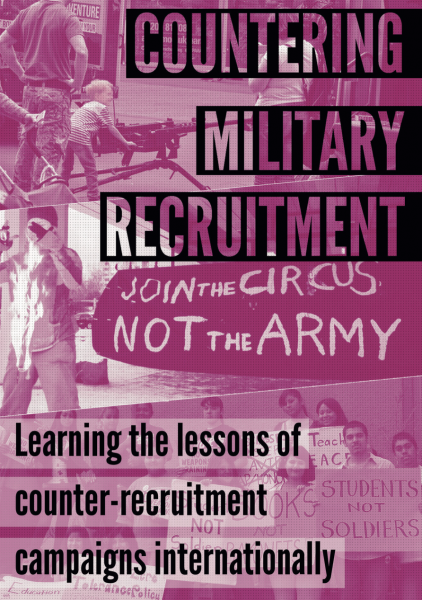
WRI's new booklet, Countering Military Recruitment: Learning the lessons of counter-recruitment campaigns internationally, is out now. The booklet includes examples of campaigning against youth militarisation across different countries with the contribution of grassroot activists.
You can order a paperback version here.


